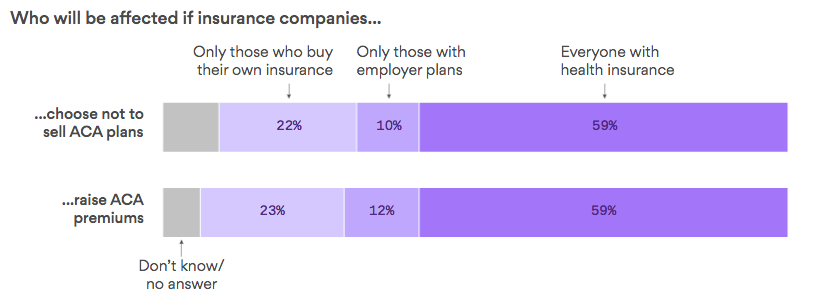
ASHINGTON — After congressional Republicans repeatedly failed last year to repeal the Affordable Care Act, President Donald Trump promised to “let Obamacare implode” on its own.
A new lawsuit being filed Thursday argues that Trump’s efforts to make good on that promise violate the U.S. Constitution.
Trump has “waged a relentless effort to use executive action alone to undermine and, ultimately, eliminate the law,” the complaint charges, according to a draft obtained by NBC News. The lawsuit is being filed in Maryland federal court by the cities of Baltimore, Chicago, Cincinnati and Columbus, Ohio.
Since Trump’s first executive order directing federal agencies to claw back as much of the Affordable Care Act as possible, his directives have increased health coverage costs and depressed enrollment, the complainants say.
Specifically, the suit argues that Trump is violating Article II of the Constitution, requiring the president to “take care that the laws be faithfully executed.”
“There’s a clear case of premeditated destruction of the Affordable Care Act,” said Zach Klein, Columbus city attorney.
This includes making it easier for individuals and trade groups to purchase coverage outside the law’s insurance markets; threatening to eliminate cost-sharing reduction payments; cutting funding for “navigators,” or those who help individuals enroll in the program; and using federal funds Congress dedicated to implementing the law toward making videos criticizing it.
On Wednesday, Health and Human Services Secretary Alex Azar announced a plan for cheaper, short-term insurance plans, the latest example of actions that critics say will drive up costs on Obamacare exchanges.
During a call-in appearance on Rush Limbaugh’s radio show Wednesday, Trump took credit for all but ending the Affordable Care Act.
“I have just about ended Obamacare. We have great health care,” he said. “We have a lot of great things happening right now. New programs are coming out.”
The suit also relies on a list of Trump’s tweets indicating his intent to unravel the law, according to a lawyer involved in the case.
Constitutional scholars have long debated the extent to which the chief executive must “faithfully” execute U.S. laws under Article II — from Franklin Roosevelt’s objections to legislative veto provisions and Harry Truman’s seizure of steel mills.
Citing the same “take care” clause, Republicans took issue with President Barack Obama’s executive orders on immigration as well as his delayed implementation of the health law.
This case stands apart from all others, says Abbe Gluck, a Yale University law professor and expert on Article II, because it’s not about the extent to which Trump is “faithfully” implementing a law. Rather Trump has been frank that he is sabotaging the law, she said.
“That’s what makes this case novel, first of its kind and really important,” Gluck said. “No scholar or court has ever said the president can use his discretion to implement a statute to purposely destroy it.”
“If there’s ever going to be a violation of the ‘take care’ clause, this is it,” she said.
If successful, the suit would strike down aspects of a Trump rule designed to undercut insurance markets; render a judgment he’s violating his constitutional obligation to enforce the statute; and issue an injunction that he implement the law faithfully.
LOCAL IMPACT
The suit also cites Trump scaling back oversight of insurance issuers, cutting open enrollment in half, urging a federal court to throw out Obamacare’s protections for pre-existing conditions and undermining the individual mandate.
All of these actions, they say, undercut confidence in the program and enrollment, the keys to its success. The whole concept of insurance, whether it’s for cars, homes or people, is to minimize risk by creating a diverse pool — in this case of healthy and unhealthy, young and old participants.
John Yoo, a law professor at the University of California, Berkeley, and former Bush Justice Department official, said a president can’t refuse to enforce a law just because he disagrees with it.
Still, Obamacare was written in a way that gives great leeway to the executive, said Yoo.
“Is there something specific in the statute that he is refusing?” he said, adding that funding reductions don’t qualify. “That’s the constitutional standard,” said Yoo.
In 2017, there was a 37 percent average increase in premiums nationwide, and 3 million more people lacked health insurance than did in 2016. In Columbus, city-subsidized health centers saw almost 3,000 more uninsured patients in 2017. As the uninsured rate increases, Columbus must also pay more for ambulance transports, draining millions of dollars from localities.
“The accumulation of these (acts) has cost Americans thousands of dollars more, and it was done in a way that can be clearly traced” to Trump’s orders, said Andy Slavitt, former acting administrator of the Centers for Medicare and Medicaid under Obama.
The budget strain is also hampering efforts to address the opioid crisis. Ohio has the second-highest drug overdose death rate, according to the Centers for Disease Control and Prevention, with the city of Columbus averaging nine or 10 Naloxone administrations a day to prevent deaths.
“The time for criticism is over,” Klein said. “We have no ability to recoup that money. We just have to eat it due to the Trump administration’s efforts to sabotage the law.”
HEALTH CARE POLITICS
The plaintiffs deny politics play a role in the timing of the suit, which they say they have been building for the past year.
But it will likely serve as a reminder to voters of Trump’s hand in rising premiums just as they are set to skyrocket. Trump’s 2016 campaign platform was built in part on greater economic security for working-class Americans.
Insurance companies are hiking rates in the individual market, citing decisions being made in Washington. And premiums are set to surge in 2019, with a majority of states proposing increases over and above the previous year.
After several elections in which Republicans used Obamacare to attack Democrats, the party says it’s regained the advantage on the health care issue. In the past few years, the Republican-led Congress has voted dozens of times to try and repeal the law, failing each time. “People got to see they (the GOP) have no better alternative,” said Slavitt.
“Most Democrats are saying ‘look we never said the ACA is perfect, but the other person is trying to take away your coverage,” said Slavitt.
Trump’s former Health and Human Services Secretary Tom Price has also faulted Congress’s repeal of the individual mandate for coming premium increases. Further, Trump’s Justice Department is taking aim at Obamacare’s most popular provisions: a ban on insurance companies’ discriminating against individuals with pre-existing conditions.
CONSTITUTIONAL OBLIGATION
The suit seeks to force Trump to adopt policies intended to expand rather than shrink enrollment; reduce rather than increase premiums; and promote instead of attack the ACA.
Among the specific rules plaintiffs seek to reverse are allowing exchanges to strip individuals of tax credits without notification and reducing oversight of insurance agents and brokers, as well as oversight of the law in general.
“What’s insidious here is the administration is doing it knowing that confidence in the act is key to its success,” said Adam Grogg, senior counsel at Democracy Forward and the lead litigator on the case. The fewer Americans who enroll in the program, the more volatile the market, he said.
“The overall picture here is one of sabotage that drives up the rates of uninsured and underinsured and leaves cites and counties holding the bag,” Grogg said.
Four cities are charging that the president is failing to execute the law by actively undercutting the Affordable Care Act.










